About Ardmore Distillery
With sweeping valleys and famed golden eagles – the brand’s emblem – swooping overhead, the quiet location seems an unlikely place for a large workhorse of a distillery to be located. But it was the access to good water sources from the springs on the nearby Knockandy Hill, the local peat and the next door Aberdeen to Inverness railway that captured the attention of Adam Teacher when the family decided to build its own distillery.
Since its opening in the late 1800s, the distillery has quietly but surely produced whisky for blends, only releasing a small amount as single malt bottlings. Its unique smokiness made it unusual in the area, with most nearby distilleries switching to unpeated malt whisky production in the 20th century. The characteristic peat note in Ardmore made it a vital whisky for blending, providing the top note smokiness to the Teacher’s staple of blended whiskies.
Expansions in the mid-1950s and then again in the mid-1970s, saw the distillery grow its capacity to the 5.4 million litres per annum it produces today. The distillery stayed in family hands until being bought out by Allied Domecq in 1976, eventually joining the Beam portfolio in 2006, and transferring to the Beam Suntory staple in 2014.
Today, while most of the distillery’s production still goes into blends, it does have a handful of distillery own bottlings, including: a richly peated The Ardmore Legacy, a quarter-cask matured The Ardmore Tradition, a double-cask matured The Ardmore Port Wood Finish and The Ardmore Triple Cask.
DISTILLERY KEY INFORMATION
| Country | Scotland, United Kingdom |
| Region | Highland |
| Established | 1898 |
| Owner | Beam Suntory |
| Number of Stills | 4 Wash, 4 Spirit |
| Visitor Centre | No |
| Status | Active |
| Website | ardmore.com |


